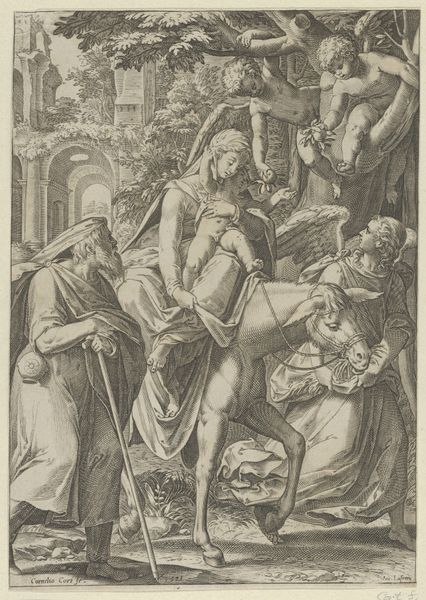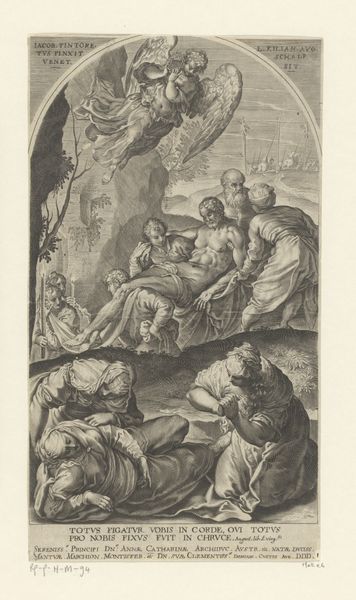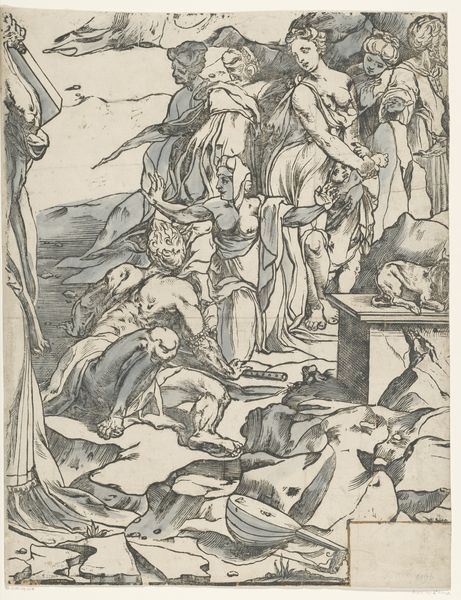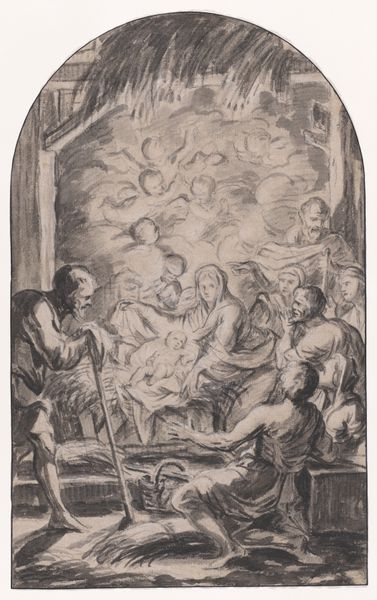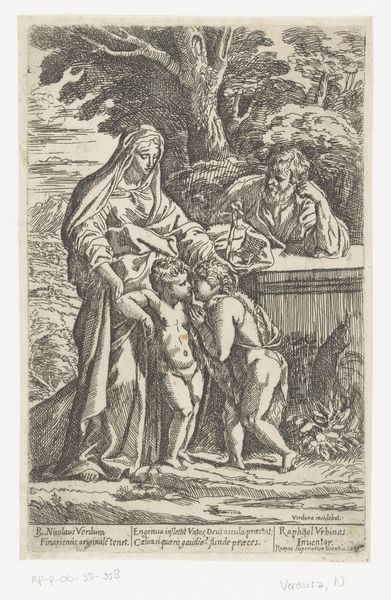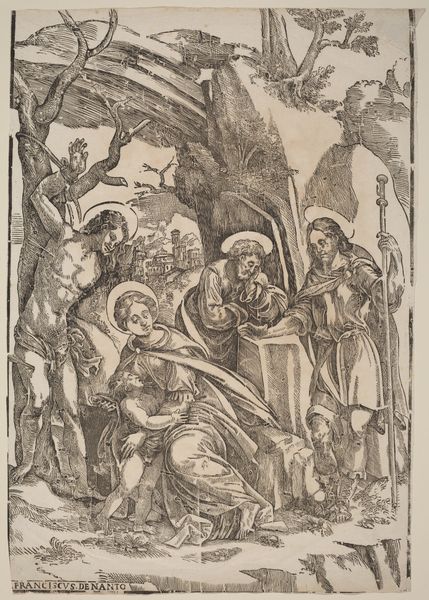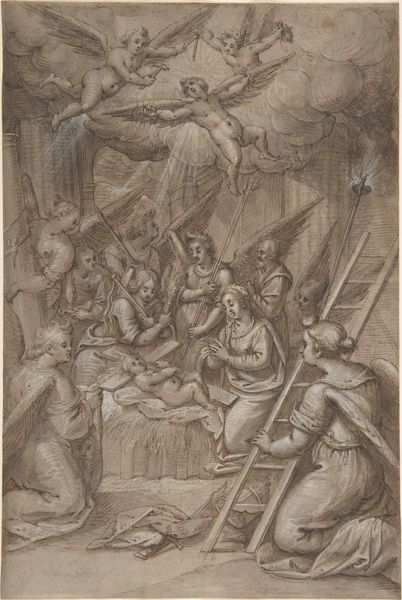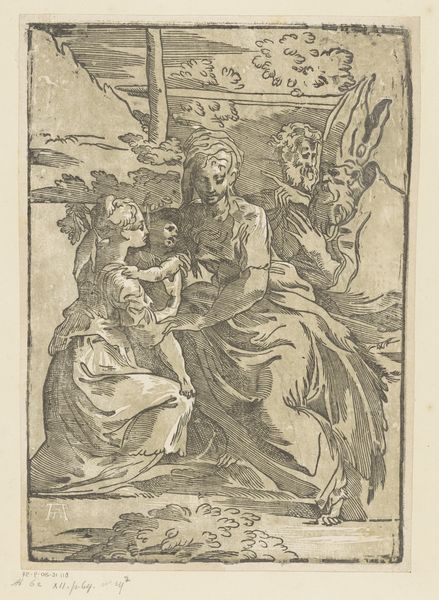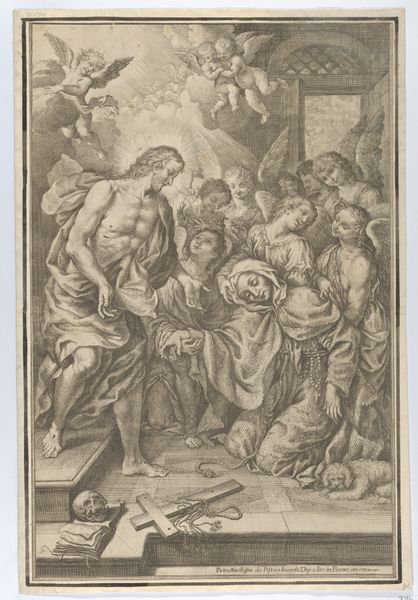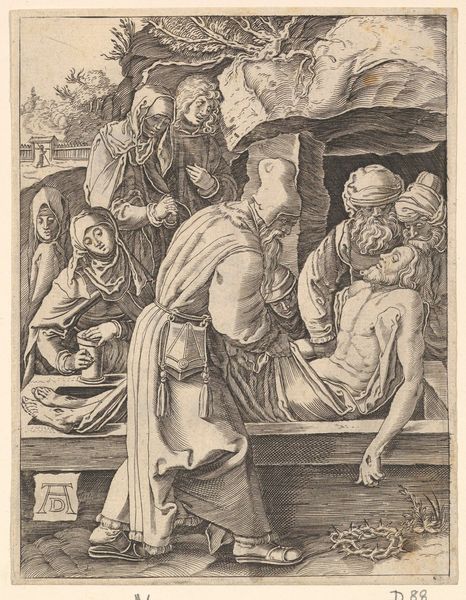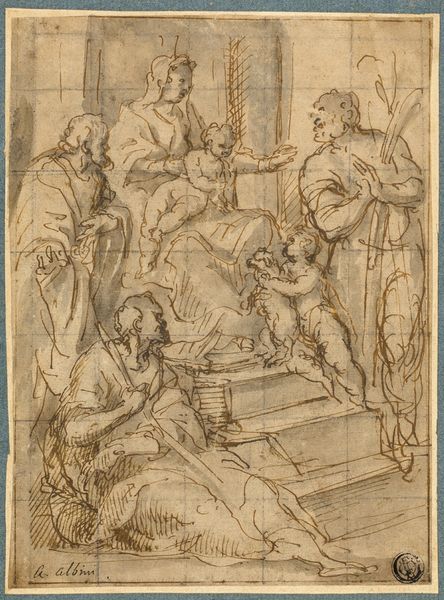
drawing, print, engraving
#
drawing
#
narrative-art
#
baroque
# print
#
figuration
#
history-painting
#
engraving
Dimensions: Sheet (Trimmed): 17 5/8 × 11 3/4 in. (44.7 × 29.8 cm)
Copyright: Public Domain
Editor: We're looking at "Adoration of the Shepherds," an engraving by Giuseppe Maria Mitelli from sometime between 1654 and 1718, housed at The Met. The intricate linework almost feels like a drawing. What strikes me is the theatrical way the shepherds are positioned, peering in – how would you interpret that choice? Curator: Mitelli's work comes at a fascinating intersection of religious narrative and Baroque visual culture. Remember that prints like this were not just art objects, but powerful tools of dissemination. How do you think the 'theatricality,' as you call it, served a purpose in communicating religious ideas to a broader audience in this period? Editor: Maybe the drama makes it more engaging, more memorable. It almost anticipates modern media in its impact. So, do you see a direct tie to the socio-political issues of the time through this focus on theatrical presentation? Curator: Absolutely. The Baroque era was deeply intertwined with the Counter-Reformation. The Church was keenly aware of the power of visual rhetoric. This image is not just about depicting a biblical scene; it’s about reaffirming faith through accessible emotional engagement, fighting against Protestant iconoclasm. Notice how even the medium, printmaking, allows for wide distribution, almost a democratization of the sacred image. What is the effect of such images in a domestic context, as opposed to in a church? Editor: So it becomes a more personal, intimate connection to faith. That makes the widespread distribution all the more potent. Curator: Exactly. And think about the role of the Metropolitan Museum in holding and displaying such an item. What does it mean to see this object today in a museum context, so removed from its original function? Editor: It shifts the focus from purely religious to historical and artistic significance, which opens it up to a different kind of interpretation. Thanks, I hadn't considered the Counter-Reformation context so directly. Curator: Precisely. The history of art is always entwined with the history of power and belief.
Comments
No comments
Be the first to comment and join the conversation on the ultimate creative platform.

